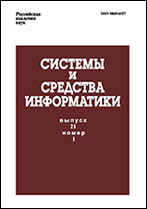|
This article is cited in 1 scientific paper (total in 1 paper)
Uninterrupted connectivity time performance analysis in terahertz systems
V. A. Beschastnyia, D. Yu. Ostrikovaa, V. S. Shorginb, D. A. Moltchanovc, Yu. V. Gaidamakaab
a Peoples' Friendship University of Russia (RUDN University), 6 Miklukho- Maklaya Str., Moscow 117198, Russian Federation
b Federal Research Center "Computer Science and Control" of the Russian Academy of Sciences, 44-2 Vavilov Str., Moscow 119133, Russian Federation
c Tampere University, 7 Korkeakoulunkatu, Tampere 33720, Finland
Abstract:
Terahertz (THz) band is considered as the main candidate for new radio access technology in sixth-generation (6G) cellular systems. Requiring large antenna arrays at base station (BS) and user equipment (UE) sides to compensate for extreme path losses, THz systems will utilize extremely directional antenna radiation patterns. As a result, the performance of these systems will be severely affected by not only blockage but also UE micromobility in hands of a user. The negative effects of these phenomena can be alleviated by utilizing the multiconnectivity functionality that allows UE to maintain two or more links to nearby BSs and use them when the currently active link is lost. By accounting for THz specific propagation, antenna and beam searching design, the density of THz BS deployment, and multiconnectivity operation, the successful session completion probability under both types of impairments has been investigated. The present results indicate that the gains of multiconnectivity are observed up to 5 simultaneously supported links and heavily depend on the application outage tolerance time and are mostly affected by micromobility. To improve it, one needs to ensure that the application may tolerate outage caused by beam searching time which is of the order of milliseconds.
Keywords:
terahertz communications, micromobility, outage, multiconnectivity, human body blockage, beam searching.
Received: 12.10.2021
Citation:
V. A. Beschastnyi, D. Yu. Ostrikova, V. S. Shorgin, D. A. Moltchanov, Yu. V. Gaidamaka, “Uninterrupted connectivity time performance analysis in terahertz systems”, Sistemy i Sredstva Inform., 31:4 (2021), 144–156
Linking options:
https://www.mathnet.ru/eng/ssi804 https://www.mathnet.ru/eng/ssi/v31/i4/p144
|

| Statistics & downloads: |
| Abstract page: | 148 | | Full-text PDF : | 52 | | References: | 35 |
|




 Contact us:
Contact us: Terms of Use
Terms of Use
 Registration to the website
Registration to the website Logotypes
Logotypes








 Citation in format
Citation in format 
